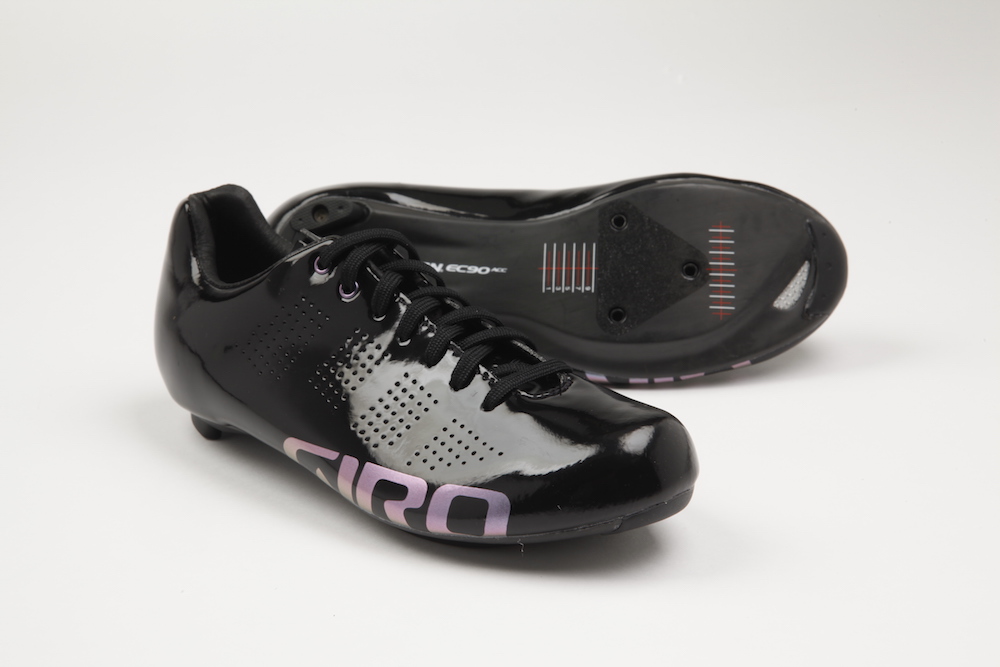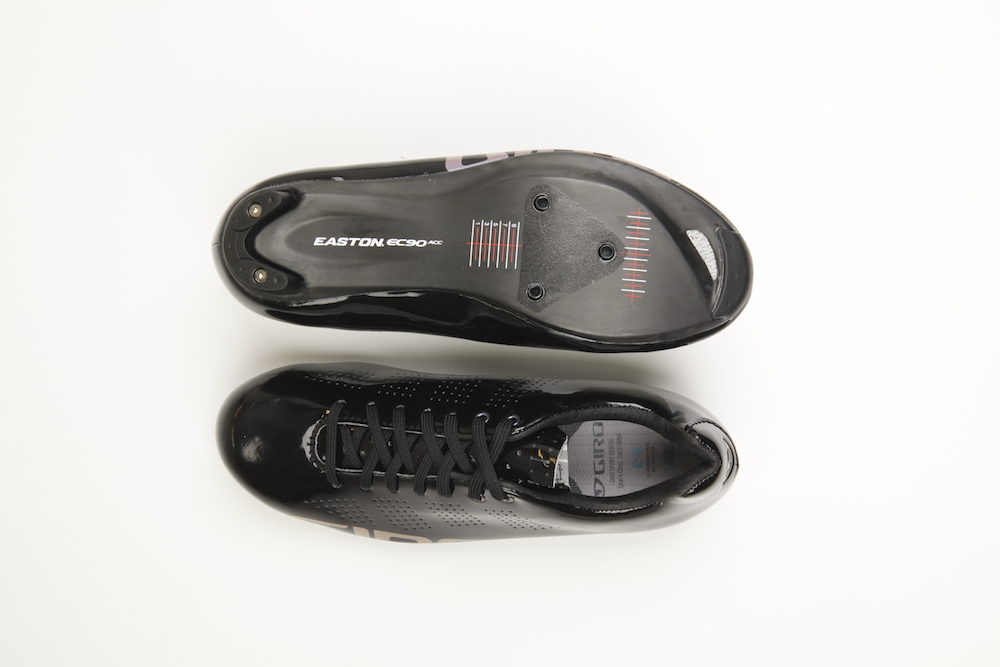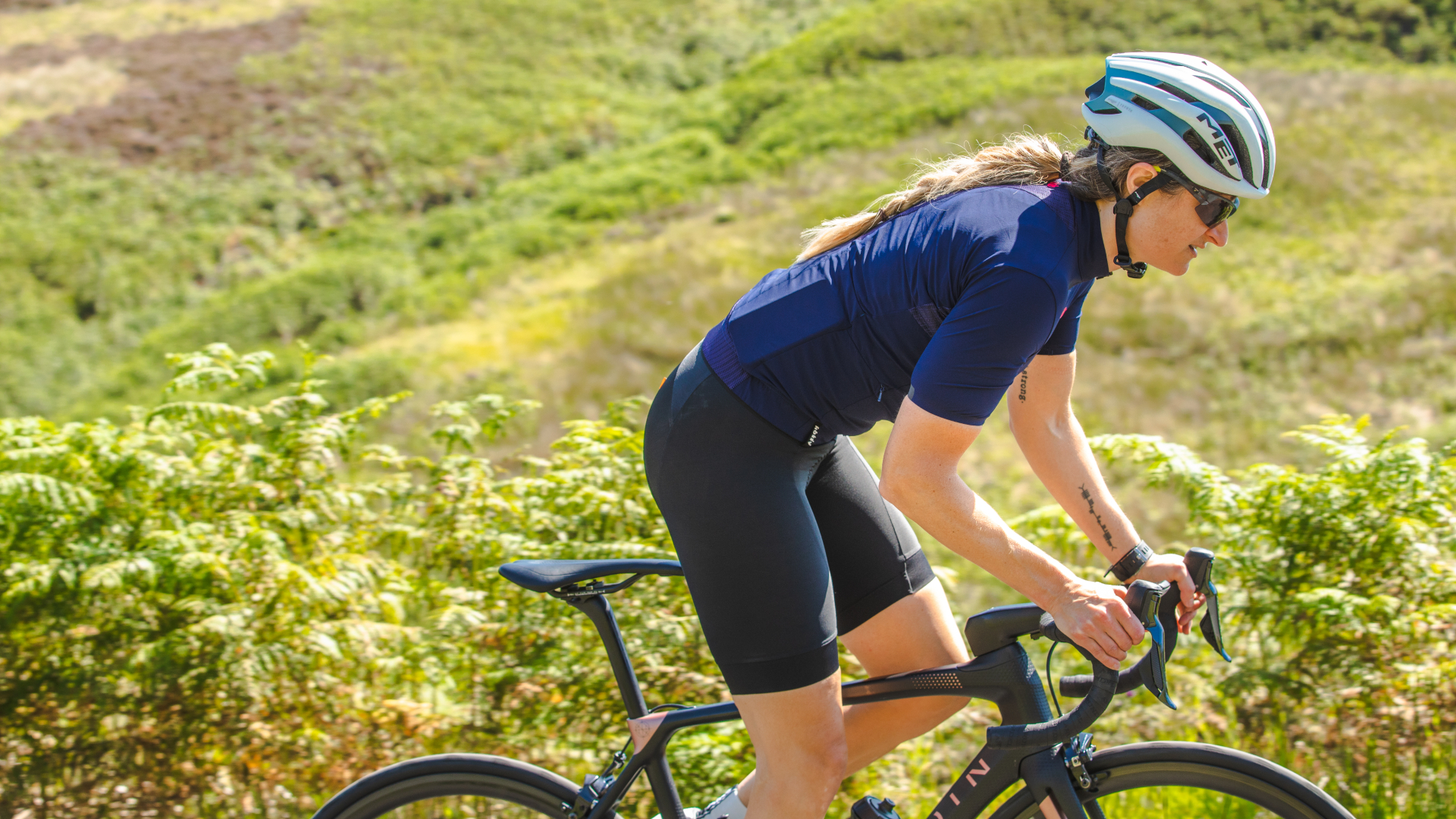Giro W Empire ACC shoes review
These classy-looking lace-ups certainly stand out from the Boa and Velcro crowd, but does function follow form?

Giro W Empire ACC shoes
With an impressive level of adjustability, there is more than meets the eye with these classic-looking lace-ups. Balancing stiffness and comfort there’s a lot to like, but the final decision will probably come down to your opinion on lace-up cycling shoes.
-
+
Good-looking
-
+
Narrow-fitting
-
+
Adjustability
-
+
Replacement parts
-
+
Reasonably lightweight
-
+
Stiff
-
+
Male-specific version available
-
-
Near impossible to adjust on the move
-
-
Expensive
-
-
Limited colour range compared to men's range
You can trust Cycling Weekly.

Lace-up cycling shoes have been surfing their renaissance for several years now, with Giro the first brand to stick its retro neck out and work with Cannonade-Drapac (formerly BMC) pro Taylor Phinney to design a lightweight, stiff shoe. Various versions of the Giro Empire shoe have been worn by the likes of Bradley Wiggins, but the women-specific Giro W Empire ACC shoes are a more recent addition to the range.
Construction
The Giro W Empire ACC shoe is made from a one-piece Evofibre upper which means not only clean looks but also a lack of seams or stitching for greater comfort. According to Giro the material takes the best attributes from mesh and microfibre, making these shoes waterproof and breathable.
It would be easy to assume the laces are an off-the-shelf variety, but in fact Giro has specifically sourced Teijin microfibre laces that it says hold a knot better and are more durable and lighter than standard laces.
>>> Buy now: Giro W Empire ACC shoes now at Tredz for £183.99
Video: road cycling shoes buyer's guide
With no nuts and bolts to speak of, I was surprised that the Giro W Empire ACC shoes weren't lighter for a high-end race shoe. They are on the market at 394g for the pair – not heavy by any means, but there are lighter options out there.
The latest race content, interviews, features, reviews and expert buying guides, direct to your inbox!

Giro's partnership with composites expert Easton does mean that the shoes come with a pedigree carbon-fibre sole. The Easton carbon ACC sole in theory makes the shoes very stiff, although I suspect this is where the majority of the shoe weight comes from. Even with a claimed stack height of just 6.5mm, they are still pretty meaty compared to other high-end race shoes.
According to Giro, the women's-specific Empire ACC not only comes in smaller sizes but also has a narrower heel and less volume compared to the male version, and coming with a SuperNatural Fit Kit with adjustable arch support should be close to perfection fit-wise.
The other plus point, should the unfortunate occur and your shoes suffer crash damage, is that laces are much cheaper to replace than cables and dials.
The ride
The upside of laces is that you get a perfect fit. And coming with a choice of three arch supports, the Giro W Empire ACC shoes did feel pretty bespoke once on and tightened up.
The downside is that there’s no safe on-the-fly adjustment: after a super-keen tugging at the laces in advance of the first outing I managed to completely cut off the circulation to my feet. After a quick stop by the side of the road to adjust them correctly correctly the Empires were incredibly comfortable, with padding in all the right places.
When out of the saddle, climbing or just upping the pace, the Giro W Empire ACC had superb torsional and lateral stiffness, and combined with the super-strong laces I was confident my foot would stay put.
We've always been told that laces and moving bike parts don't make for a great combination, but Bradley Wiggins would clearly beg to differ, which suggests this shouldn't be a huge concern. Just make sure you use the lace-securing tab before setting off.
The only other notable point is that they come up small, so go up at least one size.
Value
At just shy of £230, the Giro W Empire ACC actually sits at the lower end of the high-end race shoe price bracket, meaning that to get something comparable performance wise you'll probably have to pay a lot more money.
Whether the Giro W Empire ACC shoes are for you will largely come down to your opinion on lace-ups versus dials and ratchets. But if you need a sweetener, then perhaps the fact that you can save up to £100 by opting for laces could help you make up your mind.
Hannah is Cycling Weekly’s longest-serving tech writer, having started with the magazine back in 2011. She has covered all things technical for both print and digital over multiple seasons representing CW at spring Classics, and Grand Tours and all races in between.
Hannah was a successful road and track racer herself, competing in UCI races all over Europe as well as in China, Pakistan and New Zealand.
For fun, she's ridden LEJOG unaided, a lap of Majorca in a day, won a 24-hour mountain bike race and tackled famous mountain passes in the French Alps, Pyrenees, Dolomites and Himalayas.
She lives just outside the Peak District National Park near Manchester UK with her partner, daughter and a small but beautifully formed bike collection.
